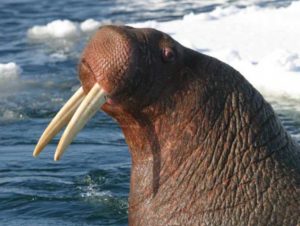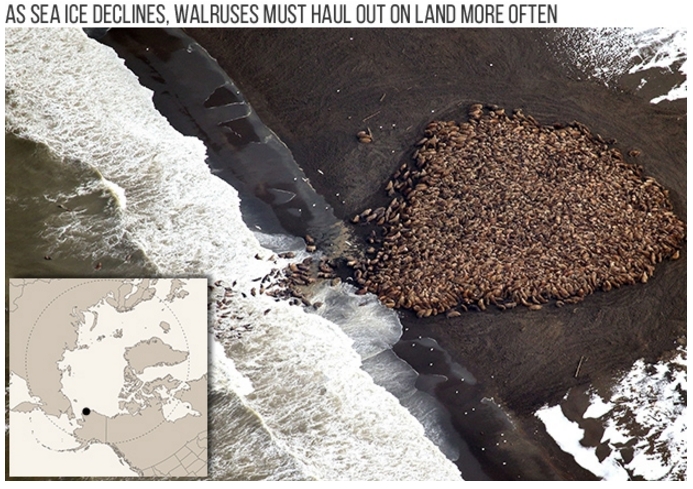9th Circuit Overturns Decision That Walruses Don’t Require Endangered Species Act Protection

SAN FRANCISCO— The U.S. 9th Circuit Court of Appeals ruled Thursday that the Trump administration’s U.S. Fish and Wildlife Service improperly denied Endangered Species Act protections to the Pacific walrus.
The Wildlife Service found in 2011 that the Pacific walrus warranted protection because climate change is melting the sea ice it needs to survive. But a few months after Trump took office, the agency reversed course and found the species no longer merited protection.
The Center for Biological Diversity sued the Trump administration in 2018 for denying Endangered Species Act protection to the walrus. Today’s decision found the agency didn’t adequately explain its reversal, as required by the Administrative Procedure Act. The ruling reverses a lower court ruling from the District of Alaska that the Wildlife Service acted properly when it denied the walrus protections in 2017.
“This ruling is big news that gives the Pacific walrus a fighting chance,” said Emily Jeffers, an attorney at the Center. “Arctic ice is disappearing at a record rate, and walruses are suffering catastrophic habitat loss. This decision means that the Fish and Wildlife Service will have to go back and examine the science on sea-ice loss and walrus survival, and we’re confident they’ll give these creatures the protections they desperately need.”
In 2011, following the Center’s 2008 petition to list the walrus as threatened or endangered under the Endangered Species Act, the Service determined that the Pacific walrus warranted protection. Officials concluded that climate change would destroy the walrus’s sea-ice habitat and cause a substantial population decline.[content id=”79272″]
The Trump administration executed a 180-degree reversal, determining in October 2017 that listing the Pacific walrus as threatened or endangered was “not warranted.” The Service reached this conclusion despite strong science demonstrating the Pacific walrus faces extinction within the foreseeable future.
The case for listing the species has only grown stronger since 2011 as Arctic sea-ice extent hit numerous record lows; summer sea ice continues to disappear from the walrus’s foraging grounds in the Chukchi Sea; and new models representing the international scientific consensus on climate change point to a dramatic loss of the walrus’s sea-ice habitat through at least the end of the century.
Pacific walruses, known for their massive size and ever-growing pair of tusks, depend on Arctic sea ice for their essential life functions. They need sea ice for courtship, giving birth, nursing their young and resting during foraging and molting. Without strong action to reduce carbon pollution, scientists project that summer sea ice will disappear in the next decade or two.
The listing of the Pacific walrus would not affect subsistence harvest of the species by Alaska natives. Listing the walrus would provide the species with several important safeguards, including increased protection from oil and gas development and the greenhouse gas emissions that are driving climate change. It also requires the federal government to designate critical habitat to protect the species’ most essential habitat areas.








